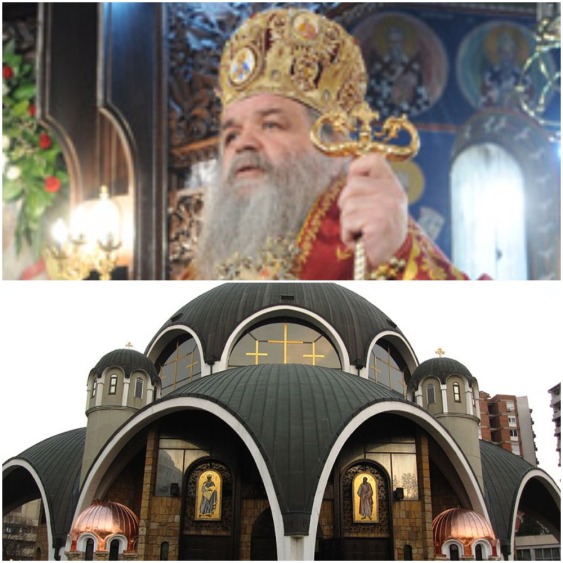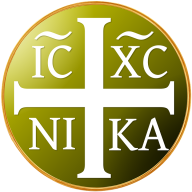.
Archbishop Stefan (Veljanovski) of Ohrid and Macedonia
Church of St. Clement of Ohrid. Cathedral (Sobor) of the Macedonian Orthodox Church. Skopje, North Macedonia.
✠
This weekend in Sremski Karlovci, the Serbian Orthodox Church will be celebrating 100 years since the re-establishment of the Serbian Patriarchate. The 1920s were instrumental in the shaping and forming of what we today refer as the Serbian Orthodox Church. After the formation of the Kingdom of Serbs, Croats, and Slovenes, the Ecumenical Patriarch issued a tomos of autocephaly in 1922, confirming the unification of the various ecclesiastical units in this part of the Balkans under one Serbian Church.
Many things have changed since 1922, but the tomos issued a century ago is still in force. This provides the Serbian Orthodox Church (SOC) with ecclesiastical jurisdiction rights that span seven independent states. The Ecumenical Patriarchate’s (EP) decision of May 9, 2022, which restores the ecclesiastical canonicity of the Macedonian Orthodox Church-Ohrid Archbisphric (MOC-OA), directly affects the future of the SOC’s right to claim jurisdiction over North Macedonia.
Although the EP’s decision took the Church in North Macedonia out of irregularity it did not go so far as deciding on autocephaly for the MOC-OA. The decision represents an act of great pastoral importance as it heals the schism which has been in existence since 1967, when the Macedonian Church unilaterally seceded from the Serbian Church. The Ecumenical Patriarch, with the announcement made on Monday, brought back into communion the MOC-OA with its clergy and believers. However, this is where his engagement stops, at least for the time being, as the EP made it clear that it will be now up to the Serbian Church to regulate “administrative matters” between the SOC and the MOC-OA. The wording in the EP’s Communiqué is not the most clear, but the MOC-OA hopes that more substantive negotiations between the two Churches on the final status for the Macedonian Church should commence as a result of the EP’s decision. This may also be perceived as a last chance for the Serbian Church to move the process forward and show leadership, as the SOC ignored the call from Patriarch Bartholomew in January 2020 for talks between representatives of both Churches in the Phanar. (Editor’s note: In similar fashion, the Ecumenical Patriarchate remains in communion with the Orthodox Church in America [OCA] without recognizing its autocephaly.)
What preceded the EP’s latest decision was a bilateral meeting between delegations from the SOC and MOC-OA in the southern Serbian city of Niš that took place at the beginning of May. The meeting took place far from the public eye but seems to have ended with a sense of optimism judging by the statement of bishop Fotije of Zvornik-Tuzla (SOC), who was present at the meeting. Fotije said that, as a result of this interaction, there is a hope that the MOC-OA might return into canonical unity with the SOC, and with that with the rest of the Orthodoxy, possibly this month. Despite these encouraging words, ever since the EP’s decision was made public on Monday there has been an unusual silence among the Serbian bishops, which is by itself odd considering the agile public relations machinery within the SOC.
In the past, the SOC has never looked favourably on the MOC-OA’s autocephaly requests. For the SOC, the only way out of the MOC-OA’s limbo status has always been first autonomy followed by discussions for possible autocephaly. This was in fact almost an agreed solution in 2002 when the MOC-OA was initially in favour of such solution but then backtracked its support. As a result of the failed negotiations in 2002 and the insistence of the Serbian Church to have a de-facto, and not only de-jure, canonical presence in Macedonia, it then sponsored its own autonomous Church headed by Archbishop Jovan (Vraniškovski) and other clergy, who were originally affiliated with the MOC-OA and willing to enter into communion by rejoining the Serbian Orthodox Church. The Macedonian state has never looked favourably towards Archbishop Jovan’s church (the Orthodox Ohrid Archbishopric — OOA), and state-sponsored persecution was especially evident in the early 2000s.
The future status of the OOA will become an important part of any negotiations between the MOC-OA and the SOC. The position of Archbishop Jovan and those around him has been that there cannot be any negotiations for the future of the MOC-OA without his Church being represented as part of the SOC delegation in such negotiations. One of the possible outcomes may be similar to the Unification Council in Ukraine that took place in December 2018 and an opportunity for the MOC-OA and the OOA to unite. The EP’s decision of May 9 does not prejudge the final status for the MOC-OA, which can quickly affect the future of the process if other solutions to autocephaly are considered, such as wide autonomy within the SOC or even autonomy under the EP.
The news about the EP’s decision was welcomed positively in North Macedonia, especially among the political elites who praised this historic moment as being important to the Macedonian autocephaly effort. The reaction in wider society, however, was less enthusiastic, primarily due to two other aspects of the EP’s decision: 1). the name of the Church, and 2). the future status of the diaspora believers affiliated with the MOC-OA.
It has been well known that one of the big stumbling blocks affecting the autocephaly prospects of the Macedonian Church has to do with the name of the Church — being called Macedonian. Bartholomew made it clear in September 2018 that he would not recognise the Church under this name. This stance was also incorporated into the decision of May 9, according to which the EP recognises the MOC-OA, headed by Archbishop Stefan (Veljanovski) under the name “Ohrid” (presumably the Ohrid Archbishopric) and “excluding the term ‘Macedonian’ and any other derivative of the word ‘Macedonia.'” According to the spokesperson of the MOC-OA, Bishop Timotej, the Church will use Ohrid Archbishopric as its ecclesiological name but in parallel continues to be called MOC-OA, which might signal a bumpy road ahead.
The “name issue” extends also to neighbouring Bulgaria, whose Church, as well, claims to be the successor of the historic Ohrid Archbisphoric. In 2018, when Macedonian bishops invited representatives of the Bulgarian Orthodox Church (BOC) to participate in the festivities on the occasion of 1000 years of the Ohrid Archbisphoric, the Bulgarian Church refused to send delegates. At that time Metropolitan Naum of Ruse called the presence of a Bulgarian delegation in Ohrid an act of national treason. While the response of the Serbian Church will be of utmost significance to the future development of the MOC-OA’s quest for autocephaly, there will be, without doubt, a response from the BOC, which will add to the complexity of the issue.
The other potentially charged issue concerns the Macedonian diaspora. Similarly, to the tomos of autocephaly given to the Orthodox Church of Ukraine, in the decision of the EP it is stated that the EP recognises the Church led by Archbishop Stefan “solely within the boundaries” of today’s North Macedonia, This may provide a pointer to the future relationship of MOC-OA with the diaspora. The current MOC-OA has developed church life and eparchies in North America, Europe, and Australia.
The EP’s decision provoked an immediate reaction from the Russian Orthodox Church. Representatives of the DECR (the Moscow Patriarchate’s Department for External Church Relations, headed by Metropolitan Hilarion [Alfeyev]) have commented twice on the decision already, directly attacking the Ecumenical Patriarch’s “meddling” in the Serbian Church’s jurisdiction and calling him a self-proclaimed arbiter. The ROC did not fail to use this opportunity to once again compare the Macedonian church developments to, and draw parallels with, the Ukrainian case. The statements also show support towards the SOC, highlighting that any decision without the SOC’s blessing would not be supported by the ROC. This position of the ROC is hardly a surprise, considering the close and fraternal relationship between the Serbian and the Russian Churches, which is not news in and of itself. Ukrainian autocephaly, however, shed some more light on the nature of this relationship being based on joint interests. The SOC provided unconditional support in the ROC’s counter autocephaly efforts in Ukraine and in return received support in relation to Montenegro and North Macedonia.
The stakes are high for everyone involved in the untangling of the Macedonian Church question. The principal actors involved, being the EP, the SOC, and the MOC-OA, all have a very important role to play in healing the wound caused by the Macedonian schism and aim for the unity of the Church. There are still many political and administrative barriers that can take the process in unwanted directions.
Andreja Bogdanovski is a PhD candidate at the University of Buckingham, UK, where he studies church autocephaly movements across Eastern Europe and the Balkans. He has written previously for Orthodoxy in Dialogue.


Pingback: A change of heart – The Serbian Orthodox Church recognition of the Macedonian autocephaly – Religion in Praxis
Pingback: A CHANGE OF HEART — THE SERBIAN ORTHODOX CHURCH RECOGNITION OF THE MACEDONIAN AUTOCEPHALY by Andreja Bogdanovski | ORTHODOXY IN DIALOGUE
Pingback: Russia, Ukraine, and the Orthodox church: Where religion meets geopolitics and war – European Council on Foreign Relations
Pingback: Russia, Ukraine, and the Orthodox church: Where religion meets geopolitics and war – European Council on Foreign Relations | Close The Sky
Pingback: Russia, Ukraine, and the Orthodox church: Where faith meets geopolitics and warfare - Exclusive Global News
Pingback: IN CASE YOU MISSED IT: APRIL, MAY, JUNE, JULY | ORTHODOXY IN DIALOGUE